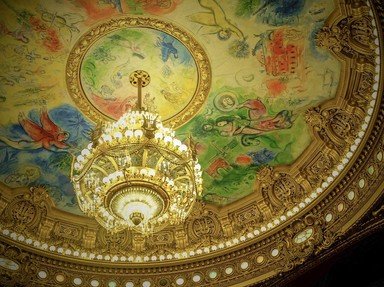Quiz Answer Key and Fun Facts
1. The 1651 opera "La Calisto" tells the story of the unfortunate Arcadian nymph who gave her name to the second largest moon of the planet Jupiter. Who was the composer of "La Calisto"?
2. Franz Josef Haydn's 1777 opera "Il Mondo della Luna" ("The Land of the Moon") does not, in fact, take place on the moon, but concerns an elaborate prank by which an astrologer convinces a stubborn father to consent to his daughters' marriage to men of their own choosing. The libretto of "Il Mondo della Luna" is based on a comedy by this Italian author.
3. In Mozart's "Die Zauberflote" ("The Magic Flute"), which character sings an aria in which he tells the moon to hide, so as not to see what he is doing?
4. The title character of Vincenzo Bellini's "Norma" is the high priestess of the druids. In Act I, she sings the celebrated (and notoriously difficult) aria "Casta Diva" to the "chaste goddess" of the moon. What sacred ritual is enacted during this scene?
5. The moonlit serenade "Come e' gentil", sung by the tenor and chorus and accompanied by lute and tambourine, comes from this comic opera by Gaetano Donizetti.
6. The title heroine of this French opera literally goes mad by moonlight, and begins dancing with her shadow.
7. Arguably the most "moonstruck" character in opera is the lovelorn water spirit Rusalka in Dvorak's opera of the same name, who sings the haunting "Song to the Moon". Dvorak was actually not the first composer to dramatize this tragic folktale, which of these Russian composers also wrote an opera about Rusalka?
8. Music from Puccini's "La Boheme" was liberally used in the 1987 film "Moonstruck", starring Cher and Nicholas Cage, which concerns the love of a passionate operaphile for his brother's fiance. In which act of "La Boheme" does the light of the moon play a decisive part in the drama?
9. Which of these Massenet operas contains a "Claire de Lune" scene, in which two star-crossed lovers declare their love for each other?
10. Apart from "La Boheme", the rising of the moon also plays an important (and fateful) role in this Puccini opera.
Source: Author
jouen58
This quiz was reviewed by FunTrivia editor
Bruyere before going online.
Any errors found in FunTrivia content are routinely corrected through our feedback system.
